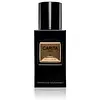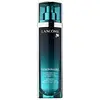What's inside
What's inside
 Key Ingredients
Key Ingredients

 Benefits
Benefits

 Concerns
Concerns

 Ingredients Side-by-side
Ingredients Side-by-side

Water
Skin ConditioningDipropylene Glycol
HumectantAlcohol Denat.
AntimicrobialDimethicone
EmollientGlycerin
HumectantHydroxyethylpiperazine Ethane Sulfonic Acid
BufferingPropylene Glycol
HumectantOrbignya Oleifera Seed Oil
EmollientHydroxypropyl Tetrahydropyrantriol
Skin ConditioningC15-19 Alkane
SolventVinyl Dimethicone/Methicone Silsesquioxane Crosspolymer
Butyrospermum Parkii Butter
Skin ConditioningGlycine Soja Oil
EmollientCarrageenan
PEG-20 Methyl Glucose Sesquistearate
EmulsifyingBis-PEG/PPG-16/16 PEG/PPG-16/16 Dimethicone
EmollientZinc Gluconate
Skin ConditioningGold
Cosmetic ColorantMethyl Methacrylate Crosspolymer
Sodium Hyaluronate
HumectantPlankton Extract
Skin ConditioningAdenosine
Skin ConditioningMagnesium Aspartate
Skin ConditioningAmmonium Polyacryloyldimethyl Taurate
Emulsion StabilisingCopper Gluconate
Skin ConditioningHydrogenated Lecithin
EmulsifyingCaprylic/Capric Triglyceride
MaskingCaprylyl Glycol
EmollientCitric Acid
BufferingTrisodium Ethylenediamine Disuccinate
Xanthan Gum
EmulsifyingPolysilicone-11
Tocopherol
AntioxidantPentaerythrityl Tetra-Di-T-Butyl Hydroxyhydrocinnamate
AntioxidantSorbic Acid
PreservativePhenoxyethanol
PreservativeCI 77491
Cosmetic ColorantCI 77891
Cosmetic ColorantMica
Cosmetic ColorantCI 15510
Cosmetic ColorantCI 19140
Cosmetic ColorantLinalool
PerfumingGeraniol
PerfumingEugenol
PerfumingAlpha-Isomethyl Ionone
PerfumingLimonene
PerfumingHydroxycitronellal
PerfumingCitronellol
PerfumingHexyl Cinnamal
PerfumingBenzyl Alcohol
PerfumingParfum
MaskingWater, Dipropylene Glycol, Alcohol Denat., Dimethicone, Glycerin, Hydroxyethylpiperazine Ethane Sulfonic Acid, Propylene Glycol, Orbignya Oleifera Seed Oil, Hydroxypropyl Tetrahydropyrantriol, C15-19 Alkane, Vinyl Dimethicone/Methicone Silsesquioxane Crosspolymer, Butyrospermum Parkii Butter, Glycine Soja Oil, Carrageenan, PEG-20 Methyl Glucose Sesquistearate, Bis-PEG/PPG-16/16 PEG/PPG-16/16 Dimethicone, Zinc Gluconate, Gold, Methyl Methacrylate Crosspolymer, Sodium Hyaluronate, Plankton Extract, Adenosine, Magnesium Aspartate, Ammonium Polyacryloyldimethyl Taurate, Copper Gluconate, Hydrogenated Lecithin, Caprylic/Capric Triglyceride, Caprylyl Glycol, Citric Acid, Trisodium Ethylenediamine Disuccinate, Xanthan Gum, Polysilicone-11, Tocopherol, Pentaerythrityl Tetra-Di-T-Butyl Hydroxyhydrocinnamate, Sorbic Acid, Phenoxyethanol, CI 77491, CI 77891, Mica, CI 15510, CI 19140, Linalool, Geraniol, Eugenol, Alpha-Isomethyl Ionone, Limonene, Hydroxycitronellal, Citronellol, Hexyl Cinnamal, Benzyl Alcohol, Parfum
Water
Skin ConditioningCyclohexasiloxane
EmollientGlycerin
HumectantAlcohol Denat.
AntimicrobialSodium Tetrahydrojasmonate
AbrasivePolysilicone-11
Octyldodecanol
EmollientHdi/Trimethylol Hexyllactone Crosspolymer
Dipropylene Glycol
HumectantBis-PEG/PPG-16/16 PEG/PPG-16/16 Dimethicone
EmollientCI 77891
Cosmetic ColorantMica
Cosmetic ColorantSecale Cereale Seed Extract
AbrasiveSodium Hyaluronate
HumectantHydroxyethylcellulose
Emulsion StabilisingPhenoxyethanol
PreservativeAdenosine
Skin ConditioningPoloxamer 338
EmulsifyingAmmonium Polyacryloyldimethyl Taurate
Emulsion StabilisingDimethicone
EmollientDimethiconol
EmollientPentylene Glycol
Skin ConditioningCaprylic/Capric Triglyceride
MaskingDisodium EDTA
Methyldihydrojasmonate
MaskingCitronellol
PerfumingInulin Lauryl Carbamate
Emulsion StabilisingParfum
MaskingWater, Cyclohexasiloxane, Glycerin, Alcohol Denat., Sodium Tetrahydrojasmonate, Polysilicone-11, Octyldodecanol, Hdi/Trimethylol Hexyllactone Crosspolymer, Dipropylene Glycol, Bis-PEG/PPG-16/16 PEG/PPG-16/16 Dimethicone, CI 77891, Mica, Secale Cereale Seed Extract, Sodium Hyaluronate, Hydroxyethylcellulose, Phenoxyethanol, Adenosine, Poloxamer 338, Ammonium Polyacryloyldimethyl Taurate, Dimethicone, Dimethiconol, Pentylene Glycol, Caprylic/Capric Triglyceride, Disodium EDTA, Methyldihydrojasmonate, Citronellol, Inulin Lauryl Carbamate, Parfum
Ingredients Explained
These ingredients are found in both products.
Ingredients higher up in an ingredient list are typically present in a larger amount.
Adenosine is in every living organism. It is one of four components in nucleic acids that helps store our DNA.
Adenosine has many benefits when used. These benefits include hydrating the skin, smoothing skin, and reducing wrinkles. Once applied, adenosine increases collagen production. It also helps with improving firmness and tissue repair.
Studies have found adenosine may also help with wound healing.
In skincare products, Adenosine is usually derived from yeast.
Learn more about AdenosineAlcohol Denat. is an alcohol with a denaturant property. It is created by mixing ethanol with other additives.
This ingredient gets a bad rep because it is irritating and drying - mostly due to its astringent property. Astringents draw out natural oils in tissue, constricting pores and leaving your skin dried out.
However, alcohol denat. is not all that bad.
Due to its low molecular weight, alcohol denat. tends to evaporate quickly. One study on pig skin found half of applied alcohol evaporated in 10 seconds and less than 3% stayed on skin.
This also helps other ingredients become better absorbed upon application.
Studies are conflicted about whether this ingredient causes skin dehydration. One study from 2005 found adding emollients to propanol-based sanitizer decreased skin dryness and irritation. Another study found irritation only occurs if your skin is already damaged.
Small amounts of alcohol are generally tolerated by oily skin or people who live in humid environments.
The rule of thumb is if this alcohol is near the end of an ingredients list, it will probably not affect your skin much.
Also...
This ingredient has antimicrobial and solvent properties.
The antimicrobial property helps preserve products and increase their shelf life. As a solvent, it helps dissolve other ingredients.
Other types of astringent alcohols include:
Learn more about Alcohol Denat.Ammonium Polyacryloyldimethyl Taurate is a polymer made from ammonium salts. It helps add stability and texture to a product. This ingredient is stable over a wide pH range.
Due to its ability to absorb water, it can help thicken the texture of a product. As an emulsion stabilizer, this ingredient is stabilizes other ingredients to create a consistent texture.
According to a manufacturer, it helps create a "smooth, light and fresh" texture.
Learn more about Ammonium Polyacryloyldimethyl TaurateBis-PEG/PPG-16/16 PEG/PPG-16/16 Dimethicone is a type of silicone.
This ingredient is an emollient, solvent, and texture enhancer. It is considered a skin-softener by helping the skin prevent moisture loss.
It helps thicken a product's formula and makes it easier to spread by dissolving clumping compounds.
Caprylic Triglyceride is made by combining glycerin with coconut oil, forming a clear liquid.
While there is an assumption Caprylic Triglyceride can clog pores due to it being derived from coconut oil, there is no research supporting this.
Learn more about Caprylic/Capric TriglycerideCi 77891 is a white pigment from Titanium dioxide. It is naturally found in minerals such as rutile and ilmenite.
It's main function is to add a white color to cosmetics. It can also be mixed with other colors to create different shades.
Ci 77891 is commonly found in sunscreens due to its ability to block UV rays.
Learn more about CI 77891Citronellol is used to add fragrance/parfum to a product. It is often derived from plants such as roses. In fact, it can be found in many essential oils including geranium, lavender, neroli, and more. The scent of Citronellol is often described as "fresh, grassy, and citrus-like".
Since the Citronellol molecule is already unstable, Citronellol becomes irritating on the skin when exposed to air.
Citronellol is a modified terpene. Terpenes are unsaturated hydrocarbons found in plants. They make up the primary part of essential oils.
Citronellol is not able to be absorbed into deeper layers of the skin. It has low permeability,
Citronellol is also a natural insect repellent.
Learn more about CitronellolDimethicone is a type of synthetic silicone created from natural materials such as quartz.
What it does:
Dimethicone comes in different viscosities:
Depending on the viscosity, dimethicone has different properties.
Ingredients lists don't always show which type is used, so we recommend reaching out to the brand if you have questions about the viscosity.
This ingredient is unlikely to cause irritation because it does not get absorbed into skin. However, people with silicone allergies should be careful about using this ingredient.
Note: Dimethicone may contribute to pilling. This is because it is not oil or water soluble, so pilling may occur when layered with products. When mixed with heavy oils in a formula, the outcome is also quite greasy.
Learn more about DimethiconeDipropylene Glycol is a synthetically created humectant, stabilizer, and solvent.
This ingredient helps:
Dipropylene glycol is technically an alcohol, but it belongs to the glycol family (often considered part of the ‘good’ alcohols). This means it is hydrating and gentle on skin unlike drying solvent alcohols like denatured alcohol.
As a masking agent, Dipropylene Glycol can be used to cover the smell of other ingredients. However, it does not have a scent.
Studies show Dipropylene Glycol is considered safe to use in skincare.
Learn more about Dipropylene GlycolGlycerin is already naturally found in your skin. It helps moisturize and protect your skin.
A study from 2016 found glycerin to be more effective as a humectant than AHAs and hyaluronic acid.
As a humectant, it helps the skin stay hydrated by pulling moisture to your skin. The low molecular weight of glycerin allows it to pull moisture into the deeper layers of your skin.
Hydrated skin improves your skin barrier; Your skin barrier helps protect against irritants and bacteria.
Glycerin has also been found to have antimicrobial and antiviral properties. Due to these properties, glycerin is often used in wound and burn treatments.
In cosmetics, glycerin is usually derived from plants such as soybean or palm. However, it can also be sourced from animals, such as tallow or animal fat.
This ingredient is organic, colorless, odorless, and non-toxic.
Glycerin is the name for this ingredient in American English. British English uses Glycerol/Glycerine.
Learn more about GlycerinMica is a naturally occurring mineral used to add shimmer and color in cosmetics. It can also help improve the texture of a product or give it an opaque, white/silver color.
Serecite is the name for very fine but ragged grains of mica.
This ingredient is often coated with metal oxides like titanium dioxide. Trace amounts of heavy metals may be found in mica, but these metals are not harmful in our personal products.
Mica has been used since prehistoric times throughout the world. Ancient Egyptian, Indian, Greek, Roman, Aztec, and Chinese civilizations have used mica.
Learn more about MicaParfum is a catch-all term for an ingredient or more that is used to give a scent to products.
Also called "fragrance", this ingredient can be a blend of hundreds of chemicals or plant oils. This means every product with "fragrance" or "parfum" in the ingredients list is a different mixture.
For instance, Habanolide is a proprietary trade name for a specific aroma chemical. When used as a fragrance ingredient in cosmetics, most aroma chemicals fall under the broad labeling category of “FRAGRANCE” or “PARFUM” according to EU and US regulations.
The term 'parfum' or 'fragrance' is not regulated in many countries. In many cases, it is up to the brand to define this term.
For instance, many brands choose to label themselves as "fragrance-free" because they are not using synthetic fragrances. However, their products may still contain ingredients such as essential oils that are considered a fragrance by INCI standards.
One example is Calendula flower extract. Calendula is an essential oil that still imparts a scent or 'fragrance'.
Depending on the blend, the ingredients in the mixture can cause allergies and sensitivities on the skin. Some ingredients that are known EU allergens include linalool and citronellol.
Parfum can also be used to mask or cover an unpleasant scent.
The bottom line is: not all fragrances/parfum/ingredients are created equally. If you are worried about fragrances, we recommend taking a closer look at an ingredient. And of course, we always recommend speaking with a professional.
Learn more about ParfumPhenoxyethanol is a preservative that has germicide, antimicrobial, and aromatic properties. Studies show that phenoxyethanol can prevent microbial growth. By itself, it has a scent that is similar to that of a rose.
It's often used in formulations along with Caprylyl Glycol to preserve the shelf life of products.
Polysilicone-11 is a film-forming silicone that creates a non-tacky and matte finish on the skin. It's commonly used to improve texture, absorb excess oil, and help active ingredients spread evenly.
Due to its "rubber-like" structure, it stays on the skin's surface instead of being absorbed. On the skin, it creates a flexible layer that enhances wearability and stability.
Sodium Hyaluronate is hyaluronic acid's salt form. It is commonly derived from the sodium salt of hyaluronic acid.
Like hyaluronic acid, it is great at holding water and acts as a humectant. This makes it a great skin hydrating ingredient.
Sodium Hyaluronate is naturally occurring in our bodies and is mostly found in eye fluid and joints.
These are some other common types of Hyaluronic Acid:
Learn more about Sodium HyaluronateWater. It's the most common cosmetic ingredient of all. You'll usually see it at the top of ingredient lists, meaning that it makes up the largest part of the product.
So why is it so popular? Water most often acts as a solvent - this means that it helps dissolve other ingredients into the formulation.
You'll also recognize water as that liquid we all need to stay alive. If you see this, drink a glass of water. Stay hydrated!
Learn more about Water